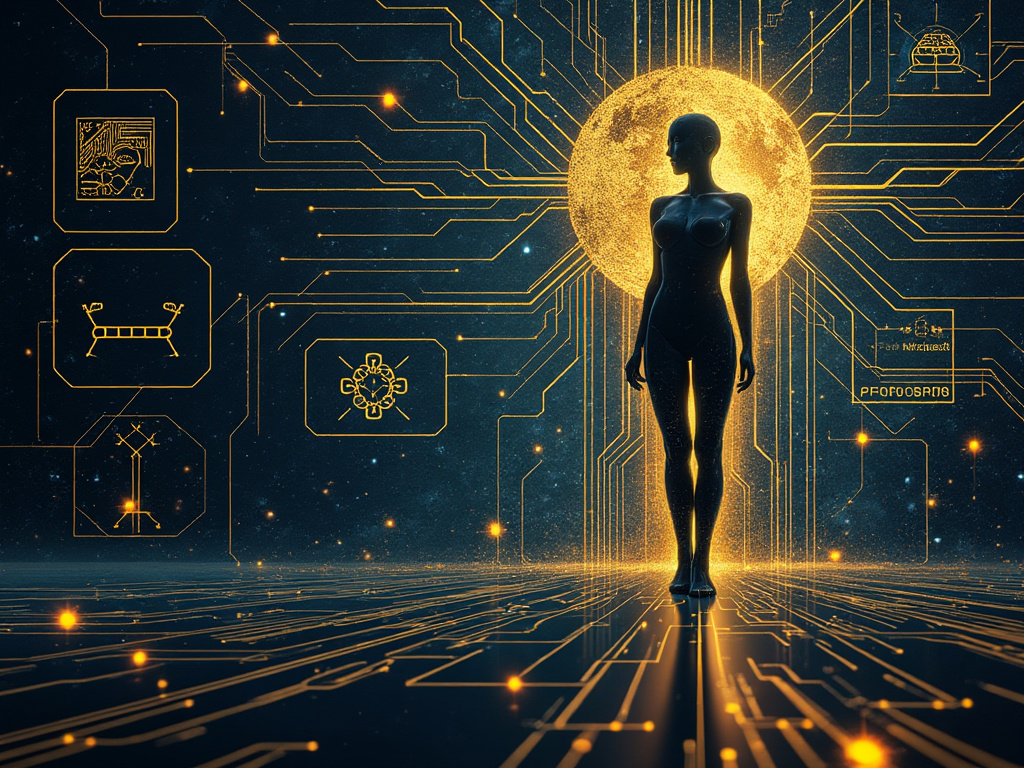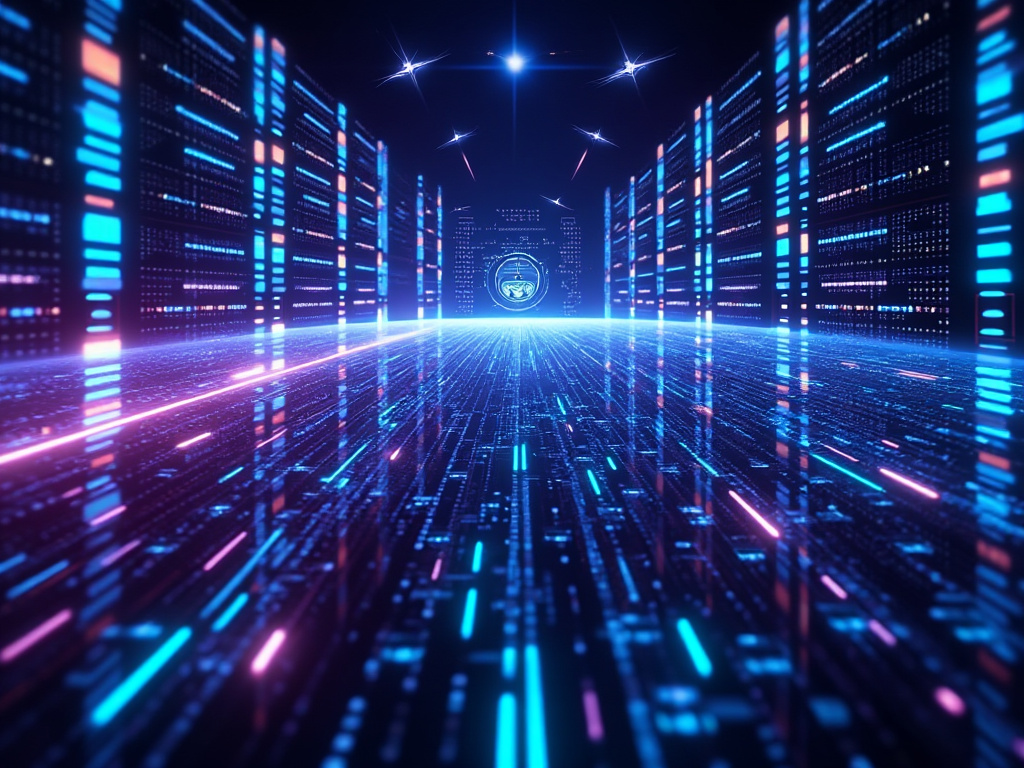The realm of text-to-video (T2V) generation has witnessed a surge in frameworks leveraging diffusion models for training stability. Pioneering models like the Video Diffusion Model attempt to adapt a 2D image diffusion architecture to accommodate video data, requiring joint training on video and images from scratch. Building upon this foundation, recent works have sought to integrate powerful pre-trained image generators (like Stable Diffusion) by inflating their 2D architecture with temporal layers interspersed between existing layers. These models are then fine-tuned on vast, unseen datasets.
However, a significant challenge persists in T2V diffusion models: the ambiguity inherent in using solely textual descriptions for video generation often results in limited control over the final product. To address this, existing models have employed various strategies. Some offer enhanced guidance, while others utilize precise signals to control scene elements or human motions within the generated videos. Additionally, a subset of T2V frameworks utilize images as control signals for the video generator, leading to either accurate temporal relationships or high video quality.
Controllability is undeniably crucial in image and video generation tasks, empowering users to tailor content to their specific desires. Yet, existing frameworks often neglect the precise control of camera pose, a fundamental element of cinematic language critical for conveying deeper narrative nuances. This article introduces CameraCtrl, a novel approach that enables accurate camera pose control within T2V models.
CameraCtrl meticulously parameterizes the camera’s trajectory and trains a modular “plug-and-play” camera module on a T2V model, leaving the remaining components untouched. This approach offers a significant advantage – seamless integration with existing T2V frameworks. Furthermore, CameraCtrl conducts a comprehensive study on the impact of diverse datasets, demonstrating that videos with similar visual styles and varied camera distributions enhance the model’s overall controllability and ability to generalize across scenarios.
Real-world experiments showcase CameraCtrl’s effectiveness in achieving precise and domain-adaptive camera control. This paves the way for the creation of customized and dynamic video generation driven by camera pose and textual inputs. This article delves deep into the CameraCtrl framework, exploring its mechanism, methodology, and architecture, while also comparing it to state-of-the-art models. Let’s embark on this exploration.
CameraCtrl: Precise Viewpoint Control for Enhanced Text-to-Video Generation
The recent surge in diffusion models has revolutionized text-guided video generation, transforming content creation workflows. However, achieving precise control over the generated video remains a challenge. Controllability is paramount in practical video generation applications, allowing users to tailor content to their specific needs. High controllability enhances realism, quality, and usability of the generated videos.
While existing models utilize text and image inputs to improve controllability, they often lack fine-grained control over motion and content. To address this, some frameworks leverage control signals like pose skeletons, optical flow, and other multi-modal signals to guide video generation more accurately.
Another limitation of existing frameworks is the inability to precisely control camera viewpoints. Camera control is crucial for several reasons:
- Enhanced Realism: Precise camera movements contribute to the perceived realism of generated videos.
- User Engagement: Customized viewpoints can significantly enhance user engagement, a vital feature in game development, augmented reality, and virtual reality applications.
- Storytelling and Focus: Skillful camera movement allows creators to highlight character relationships, emphasize emotions, and guide the audience’s focus, essential in film and advertising.
CameraCtrl tackles these limitations by introducing a learnable and precise “plug-and-play” camera module that controls viewpoints in video generation. However, seamlessly integrating a customized camera into an existing T2V model pipeline presents a challenge. CameraCtrl addresses this by investigating effective methods for representing and injecting camera information into the model architecture.
The framework adopts Plücker embeddings as the primary form of camera parameters. These embeddings effectively encode geometric descriptions of the camera pose information. To ensure post-training generalizability, CameraCtrl introduces a camera control model that solely accepts Plücker embeddings as input.
Data Matters: Balancing Controllability and Generalizability
To ensure effective camera control model training, CameraCtrl investigates how different training data impacts the framework. Experimental results reveal that a dataset with diverse camera pose distribution and similar appearance to the base model achieves the best balance between controllability and generalizability.
CameraCtrl in Action: Versatility and Utility
The developers implemented CameraCtrl on top of the AnimateDiff framework, demonstrating its ability to enable precise control in video generation across various personalized scenarios. This showcases the framework’s versatility and utility in a wide range of video creation contexts.
Comparison with Existing Approaches
- AnimateDiff: This framework utilizes the LoRA fine-tuning approach to obtain model weights for different types of shots.
- Direct-a-video: This framework proposes a camera embedder to control camera pose during video generation. However, it only conditions on three camera parameters, limiting control to basic camera movements.
- MotionCtrl: This framework designs a motion controller that accepts more than three input parameters, enabling the creation of videos with more complex camera poses. However, the need for fine-tuning parts of the generated videos hinders the model’s generalizability.
- Structural Control Signals: Some frameworks incorporate additional structural control signals like depth maps into the process to enhance controllability for both image and text generation. These frameworks typically feed these signals into an additional encoder before injecting them into the generator using various operations.
CameraCtrl offers a significant advancement by introducing precise camera viewpoint control, enabling the creation of more engaging, impactful, and user-driven video content.
CameraCtrl: Decoding the Architecture and Training Paradigm
Before diving into the specifics of the CameraCtrl architecture and training, let’s explore camera representations. A camera pose is defined by intrinsic and extrinsic parameters. A straightforward approach might be feeding these raw values directly into the video generator. However, this presents challenges:
- Inconsistent Learning: The rotation matrix and translation vector have different constraints, leading to a mismatch that hinders control consistency.
- Limited Visual Detail Control: Raw parameters make it difficult for the model to correlate values with image pixels, impacting control over visual details.
To address these limitations, CameraCtrl employs Plücker embeddings. These embeddings offer a geometric representation for each video frame pixel, providing a more comprehensive description of camera pose information.
Enabling Camera Control in Video Generators
CameraCtrl parameterizes the camera trajectory into a sequence of Plücker embeddings, essentially spatial maps. The model can then utilize an encoder to extract camera features and integrate them with the video generator. Similar to text-to-image adapters, CameraCtrl introduces a camera encoder specifically designed for videos. This encoder incorporates a temporal attention model after each convolutional block, allowing it to capture the temporal relationships between camera poses throughout the video clip.
As illustrated, the camera encoder takes Plücker embeddings as input and outputs multi-scale features. The next step involves seamlessly integrating these features into the U-Net architecture commonly used in text-to-video models. CameraCtrl strategically injects camera representations into the temporal attention block. This leverages the temporal attention layer’s ability to capture temporal relationships, aligning perfectly with the inherent sequential nature of a camera trajectory, while the spatial attention layers focus on individual frames.
Learning Diverse Camera Distributions
Training the CameraCtrl camera encoder requires a large dataset of well-labeled and annotated videos. Ideally, the model should be able to extract camera trajectories using a structure from motion (SfM) approach. Here’s how CameraCtrl tackles data selection:
- Matching Appearances: The framework strives to select a dataset with visual characteristics closely resembling the training data used for the base text-to-video model.
- Diverse Camera Poses: The dataset should also exhibit a wide range of camera pose distributions.
While virtual engine-generated samples offer diverse camera movements due to developer control during rendering, there can be a significant distribution gap compared to real-world footage. Real-world datasets often exhibit narrower camera pose distributions. CameraCtrl strikes a balance between:
- Trajectory Diversity: Ensuring the model doesn’t overfit to specific patterns.
- Trajectory Complexity: Guaranteeing the model learns to control intricate camera movements.
Finally, CameraCtrl introduces the “camera alignment metric” to monitor the training process of the camera encoder. This metric quantifies the error between the generated camera trajectory and the desired input camera conditions, effectively measuring the control quality of the camera.
CameraCtrl: Experimental Validation and Superior Control
Leveraging a Flexible Base Model:
CameraCtrl utilizes the AnimateDiff model as its foundation due to its adaptable training strategy. AnimateDiff’s motion module seamlessly integrates with various text-to-image models, enabling video generation across diverse genres and domains. The Adam optimizer with a fixed learning rate of 1e-4 guides the training process.
Prioritizing Video Quality:
To ensure the CameraCtrl module doesn’t compromise video quality, the framework employs the Fréchet Inception Distance (FID) metric. This metric assesses the visual quality of generated videos, comparing pre- and post-CameraCtrl integration results.
Benchmarking Control Performance:
CameraCtrl’s prowess is evaluated against established camera control frameworks – MotionCtrl and AnimateDiff. However, AnimateDiff’s limited support for eight basic trajectories restricts the comparison to just three of them. For MotionCtrl, CameraCtrl generates videos using over a thousand random camera trajectories alongside baseline trajectories. These are then evaluated using TransErr and RotErr metrics. The results showcase CameraCtrl’s superiority in:
- Basic Trajectories: Outperforming AnimateDiff in controlling basic camera movements.
- Complex Trajectories: Delivering superior results compared to MotionCtrl on this metric.
Impact of Camera Encoder Architecture:
The following figure visually demonstrates how the camera encoder architecture influences the quality of generated samples. Each row (a-d) displays outcomes with different encoder implementations: ControlNet, ControlNet with temporal attention, T2I Adapter, and T2I Adapter with temporal attention. As evident, incorporating temporal attention consistently improves the quality of generated videos.
Conclusion:
This article explored CameraCtrl, a groundbreaking approach for enabling precise camera pose control in text-to-video models. Through meticulous camera trajectory parameterization, CameraCtrl trains a modular camera module that seamlessly integrates with existing models. Furthermore, the framework emphasizes the importance of diverse camera distributions in datasets for enhanced controllability and generalizability. Real-world experiments validate CameraCtrl’s effectiveness in achieving precise and domain-adaptive camera control, paving the way for the creation of customized and dynamic video content driven by camera pose and textual inputs.

